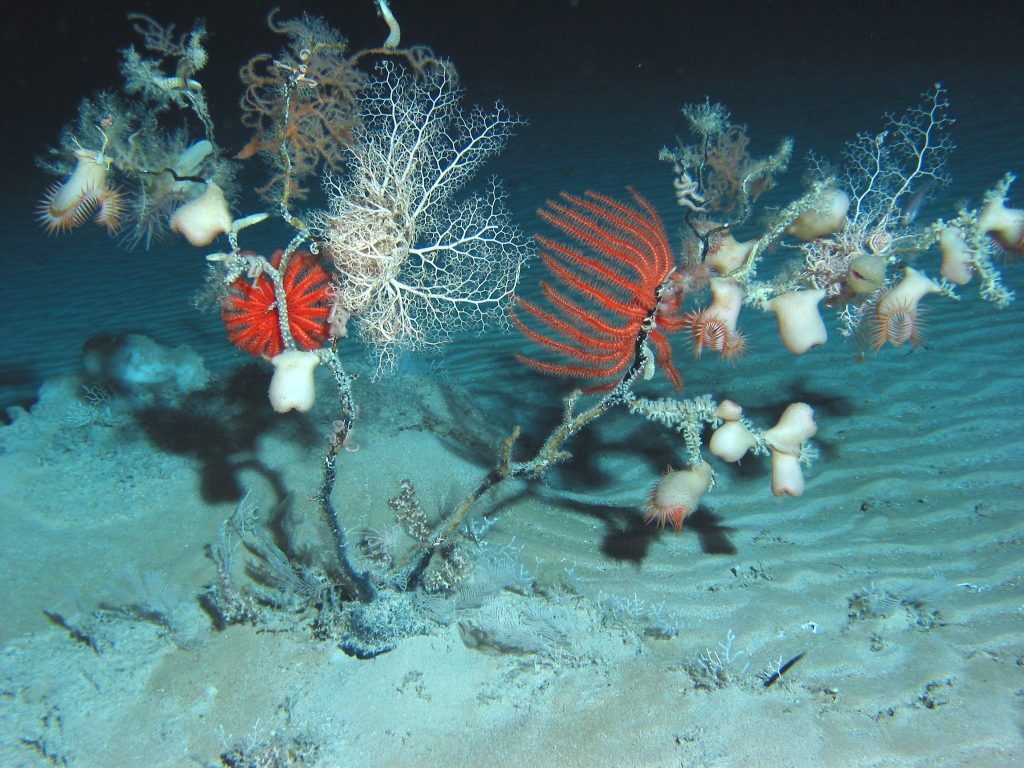Featured illlustration: Refuge by Kim Reasor
Suppose you are taking shelter from a storm, and you find that your roof has not one but many, many leaks. The very thing that provides refuge from the downpour is now compromised, and unless you can patch every leak, you’re going to need to take refuge under another roof. For your shelter to protect you, it needs to keep out all the rain, not just some of it.
Apply this concept to conservation and you have what an interdisciplinary team of researchers are calling the domains of refugia, a new conceptual framework that can help us understand where natural communities can find shelter from multiple threats. The storm that is threatening the persistence of species or populations on the landscape, from which we need “shelter”, isn’t from a single threat. It’s a whole suite of threats, such as habitat loss, invasive species, shifting patterns of fire and water, and climate change.
In practice, conservation planning or management often focuses on a single threat—for example, climate change. The domains of refugia concept provides a new framework to recognize multiple threats and identify areas that can serve as refugia from them. In this framework, domains are social, ecological, or physical drivers, processes, or cycles that exert influence on landscape structure, function, or composition, such as changing climate or patterns of wildfire, that can act as a threat. The framework is structured around three questions: What threats do species and natural communities need protection from in the study area? How can refugial conditions be quantified and mapped? How can we use domains of refugia to inform conservation planning and management? These generalizable questions can be applied to different regions around the world, with adjustments made to accommodate different domain types and data sources, including land use maps, climate data, and fire history, among others.
We applied this framework to a Southern California landscape—a hotspot of biodiversity with a Mediterranean climate characterised by hot, dry summers and mild winters yielding annual precipitation levels typically less than 12 inches. While natural communities are adapted to persist in this already demanding landscape, they face many threats including changes in fire regime, unprecedented drought, human activities, and climate change. We found that sites with a high refugial capacity—aptly referred to as super-refugia—have on average 30 percent less frequent extremely warm summers, 20 percent less frequent fire events, 10 percent less exposure to altered channels and riparian areas, and 50 percent fewer trails than the surrounding landscape. The presence of these super-refugia sites are not insignificant—covering an area of nearly 8200 km2, roughly four times the size of Mauritius—yet are greatly under-represented in the existing protected area network. By characterising and identifying refugial conditions in this Southern California landscape, we have the ability to inform immediate efforts to expand protected areas.
Like our leaky roof, there are multiple threats to species and natural communities that we must consider when constructing our conservation plans and strategies. The highly adaptable domains of refugia framework maps these threats on a landscape scale, and provides us the ability to identify our shelters from the storm—super-refugia—and act now to safeguard them.

Further Reading
Isabel M. Rojas, Megan Jennings, Erin Conlisk, Alexandra D. Syphard, Jack Mikesell, Alicia M. Kinoshita, Krista West, Doug Stow, Emanuel Storey, Mark E. De Guzman, Diane Foote, Alexandria Warneke, Amber Pairis, Sherry Ryan, Lorraine E. Flint, Alan L. Flint, Rebecca Lewison. 2021. A landscape-scale framework to identify refugia from multiple stressors. Conservation Biology https://doi.org/10.1111/cobi.13834






